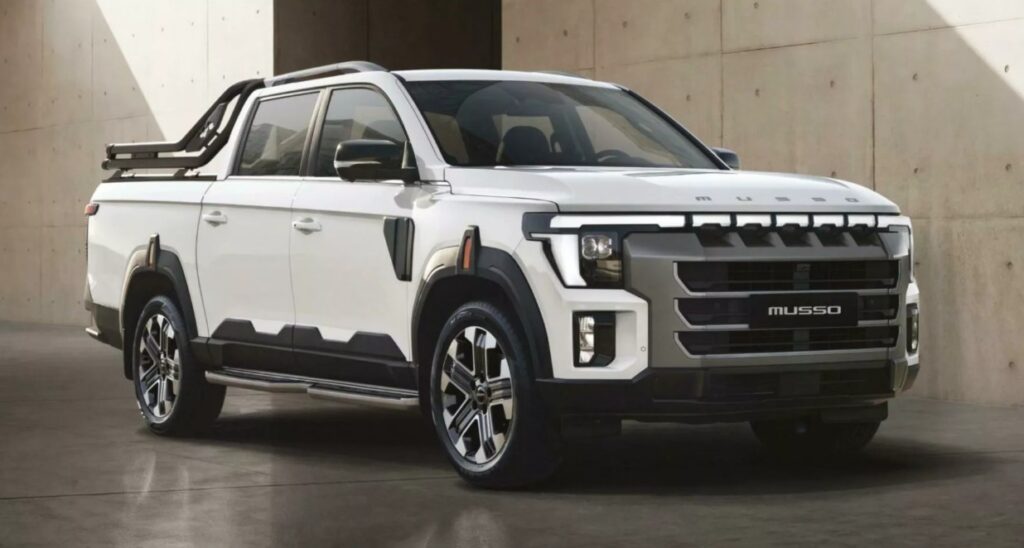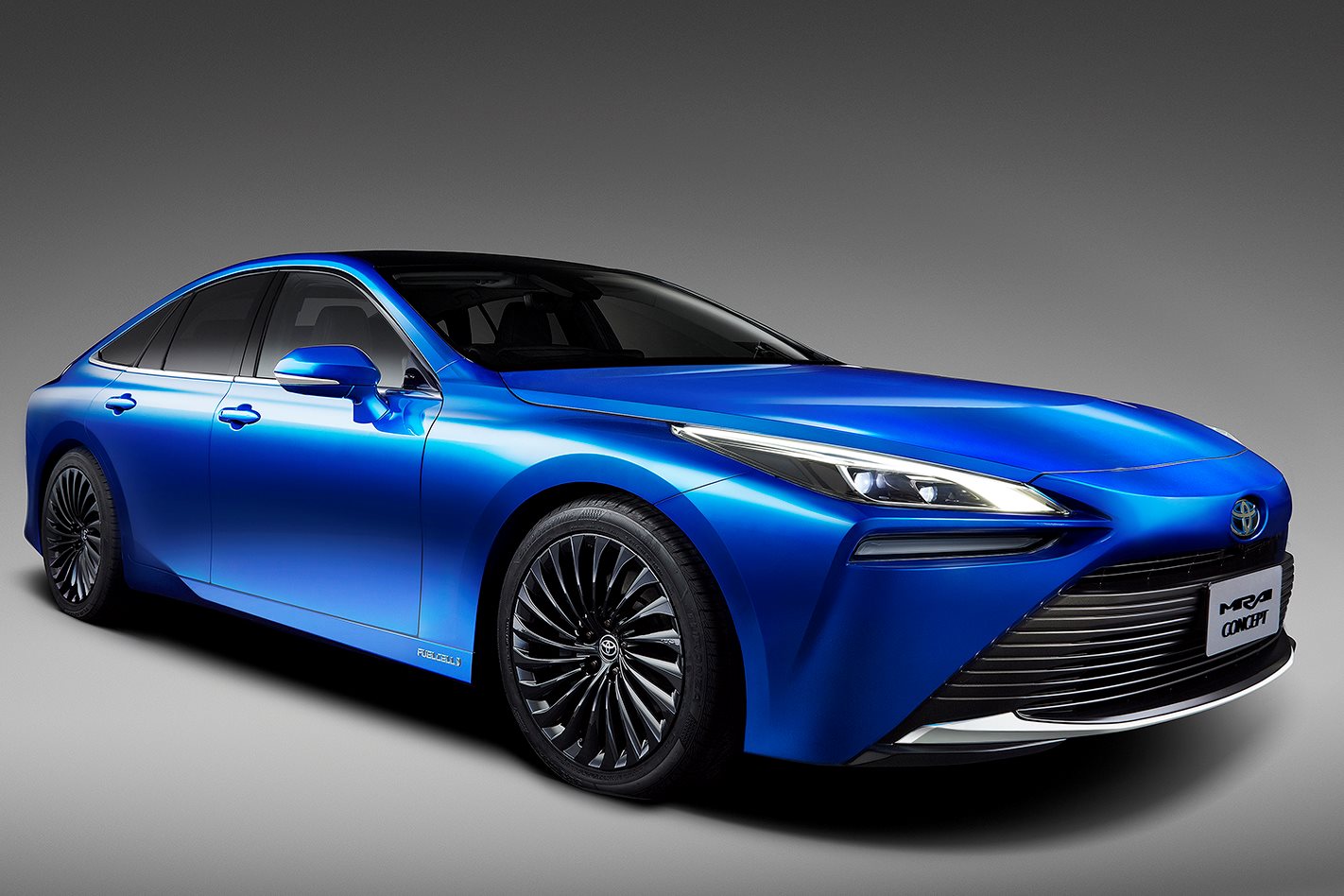
It’s the ultimate ugly duckling moment. In one fell swoop, Toyota has taken its egg-shaped Mirai hydrogen car and morphed it into a low-slung, long-bonneted, rear-wheel drive sports sedan that looks more like a track star than an eco hero.
Set to make its first public debut at the Tokyo Motor Show later this month, the second-gen Toyota Mirai you see here might say ‘concept’ in its name, but this is no auto show one-off – it’s expected to be wholly representative of the production car that will go on sale next year in Japan, Europe and the United States.
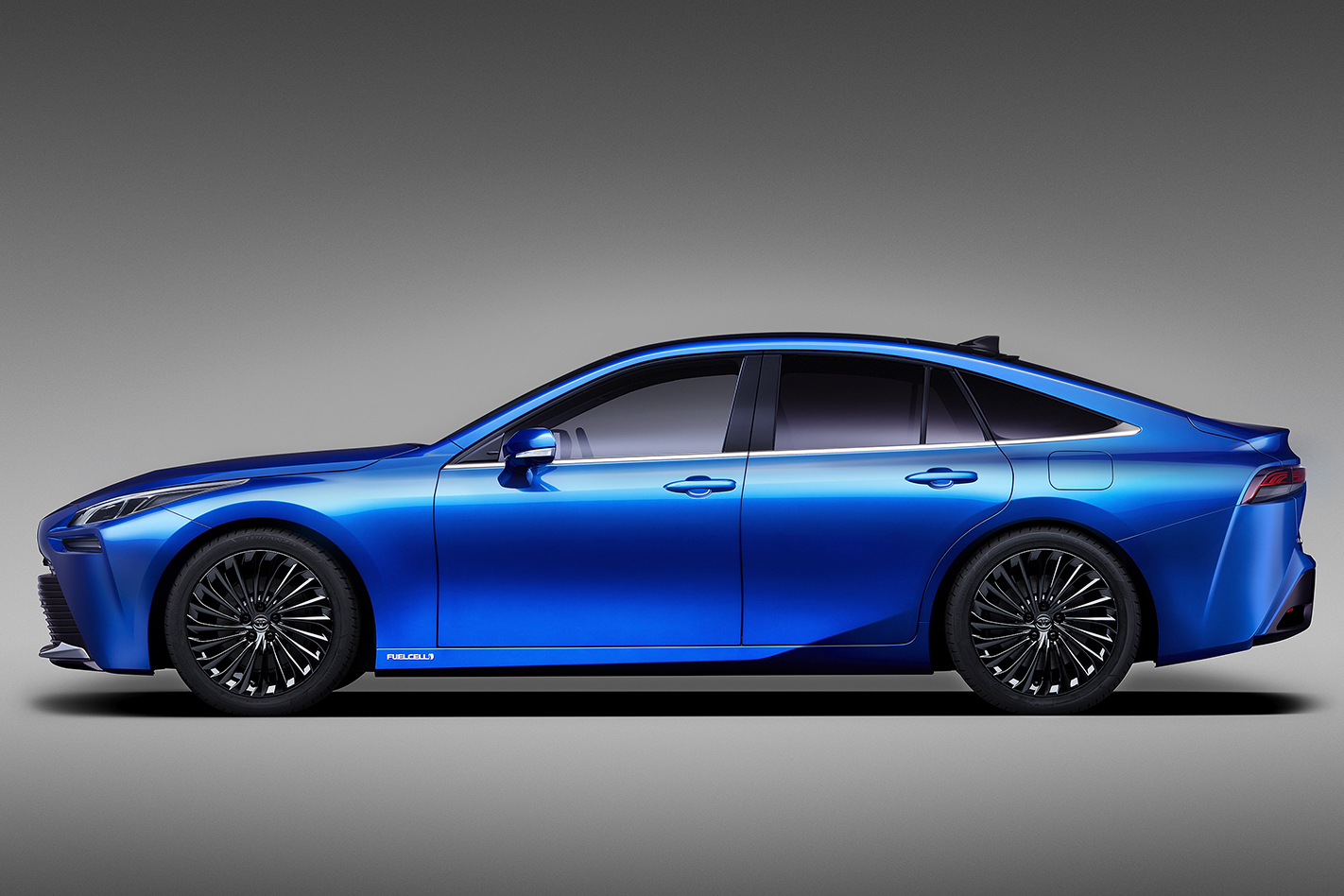
Built on the same GA-L platform that underpins the Lexus LS 500 and LC 500, the athletic DNA is very much on show in the new Toyota Mirai – which is wholly different from the Prius-like first-generation Mirai.
Classic rear-drive proportions are very much on display, with a long bonnet, a pushed-forward front axle centreline, 20-inch wheels and a short rear deck, while its near 5.0-metre overall length (4975mm to be precise) gives the new Mirai an imposing presence.
The inside is just as attractive. A 12.3-inch infotainment screen dominates the dashboard, an all-electronic instrument panel resides behind a very sporty-looking steering wheel, and there’s an abundance of copper-coloured trim accents, leather upholstery and contrast stitching to add a luxe sheen.
It’s more practical now too, with the new Mirai sporting five seats in its cabin rather than the old car’s four. These departures from the fairly dumpy and not especially opulent template set by the first-generation Mirai are very deliberate.
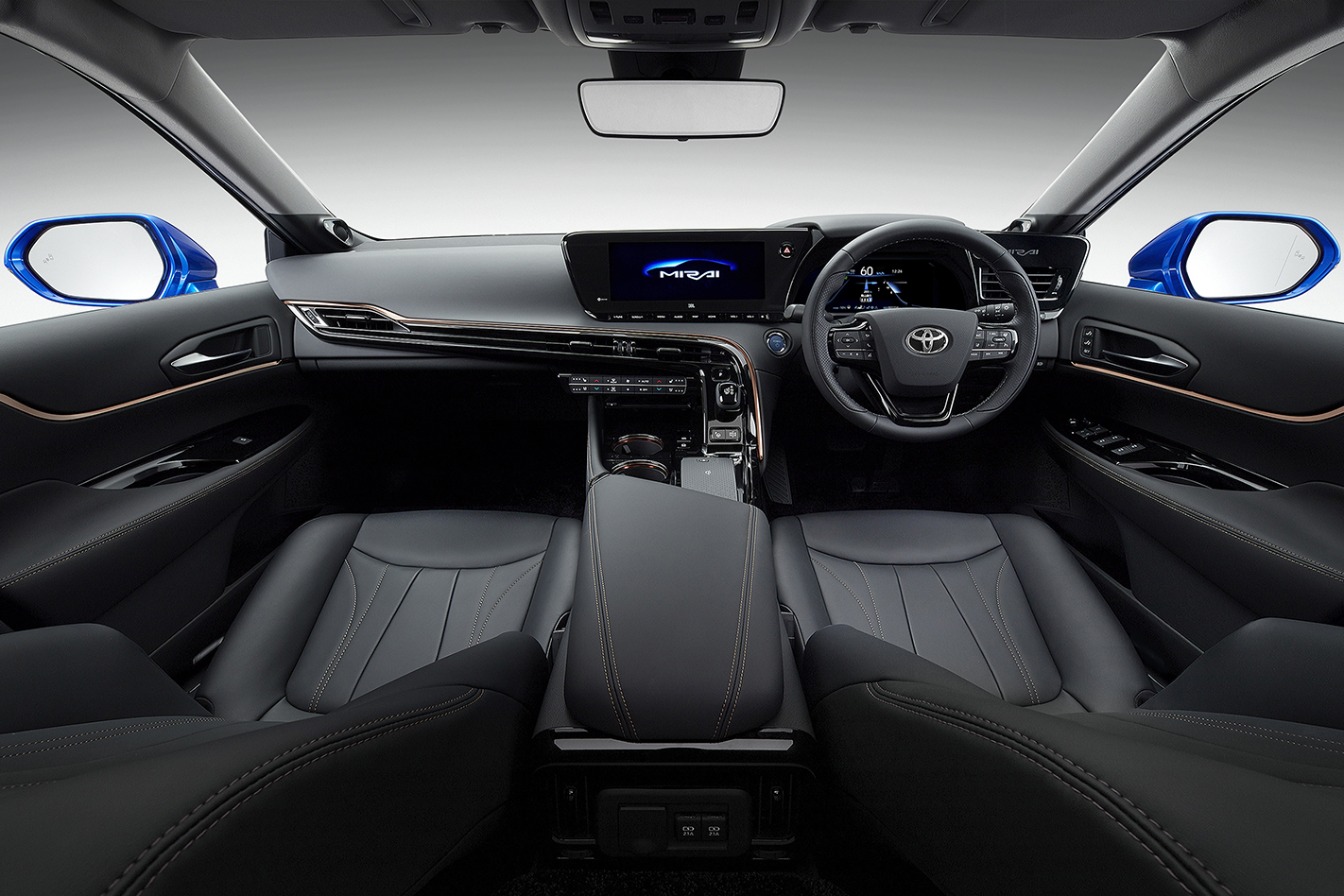
According to chief engineer Yoshikazu Tanaka, the new Mirai’s design had to be desirable in order to compel car buyers to consider alternative fuel vehicles in a more serious way.
“I want customers to say, ‘I chose the Mirai not just because it’s an FCEV, but because I simply wanted this car; it just happens to be an FCEV.’”, Tanaka said. “We will continue our development work focusing on that feeling, and we hope that with the new Mirai we will be a leader in helping realise a hydrogen energy society.”
“We have pursued the goal of making a car that customers will feel they want to drive all time, a car that has an emotional and attractive design and the kind of dynamic and responsive performance that can bring a smile to the driver’s face.
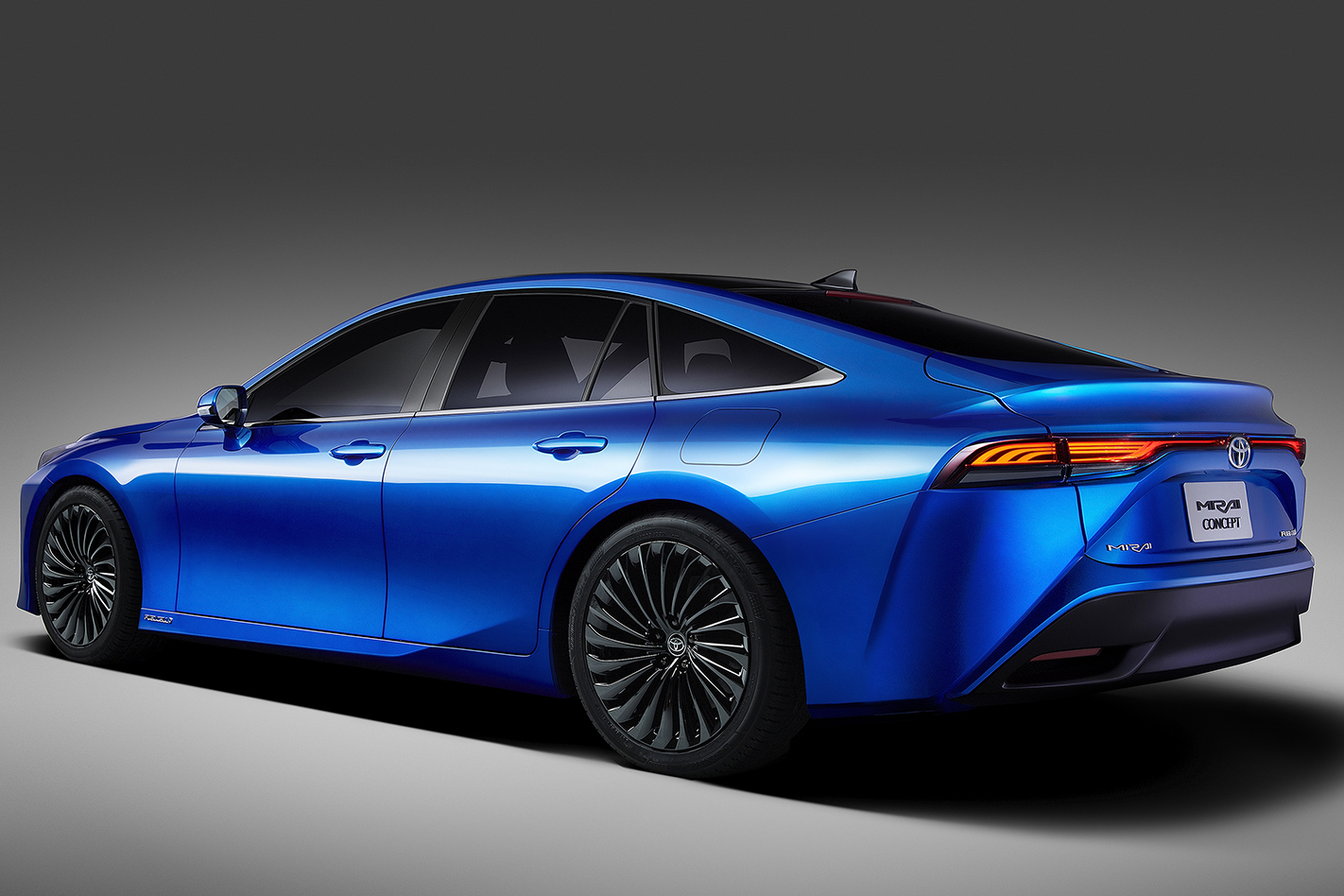
But this is more than just an attractive rebody of the old front-drive Mirai. There are substantial upgrades to Toyota’s fuel cell technology that powers it, liberating a 30 percent range boost for the second-generation car to give it a theoretical maximum of 650km from a single tank of hydrogen.
Some of that increase comes from physically bigger tanks, but Toyota also says there are advancements in the fuel cell and its associated electronics, which combines hydrogen gas with oxygen from the atmosphere to generate power for the Mirai’s electric drive motor and produces pure water as its only by-product.
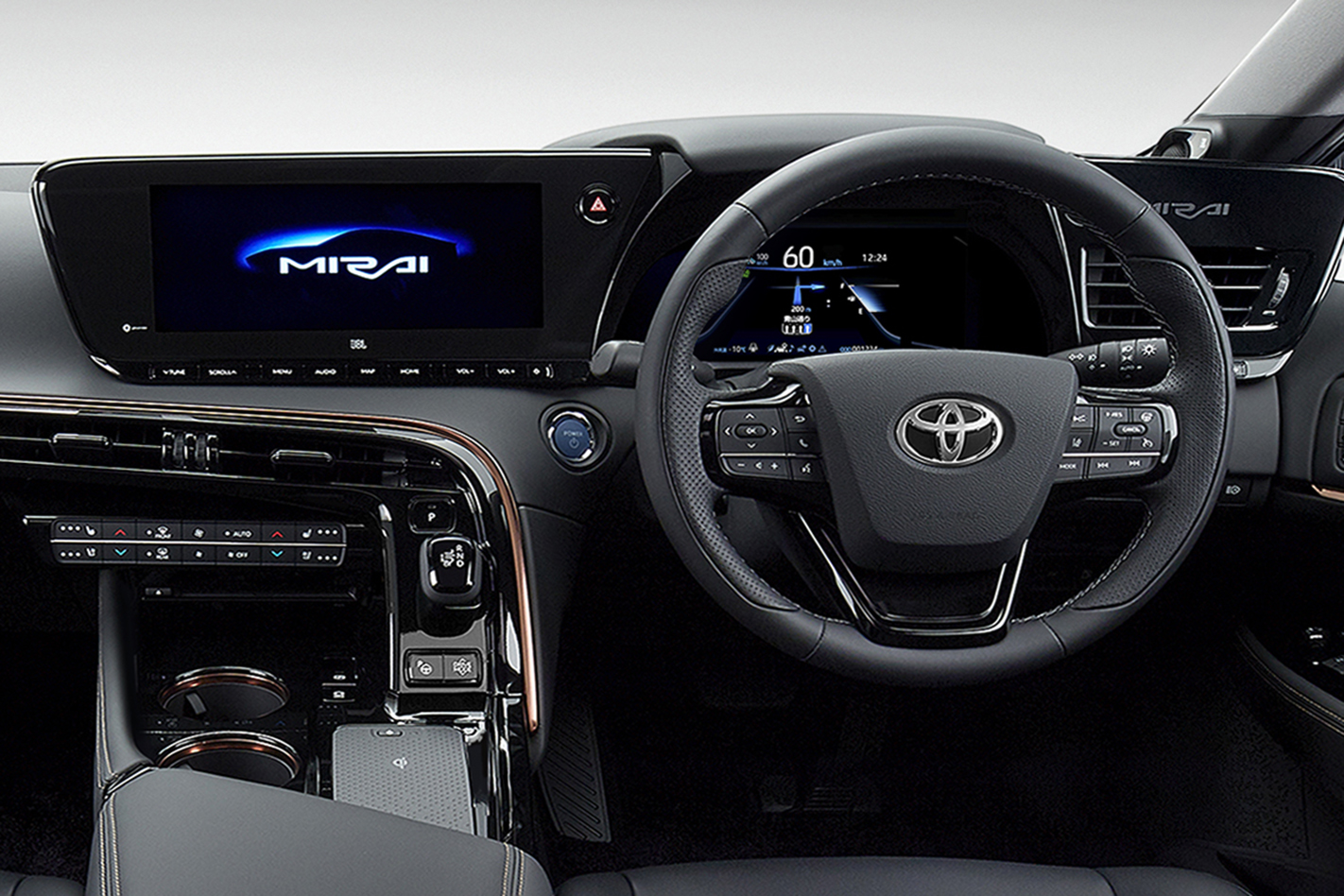
As a rival to similarly-sized electric sedans like the Tesla Model S and Porsche Taycan, the 2020 Toyota Mirai claims to have the crucial advantage of faster refuelling times, with the time needed to fill its hydrogen tanks being on the order of minutes, versus the several hours needed for big-battery EVs.
The issue of charging infrastructure and its impact on power grids is also one that’s side-stepped by hydrogen fuel cell tech – though with hydrogen-capable fuel stations being very rare in most parts of the world, Mirai owners may find their range of movement somewhat limited for a while yet.
The next-generation Toyota Mirai will go on sale globally next year, though an Australian release is far from being locked in. With Australia being one of many countries where public hydrogen stations are non-existent, we don’t expect to see it sold here for a long time – if at all.

